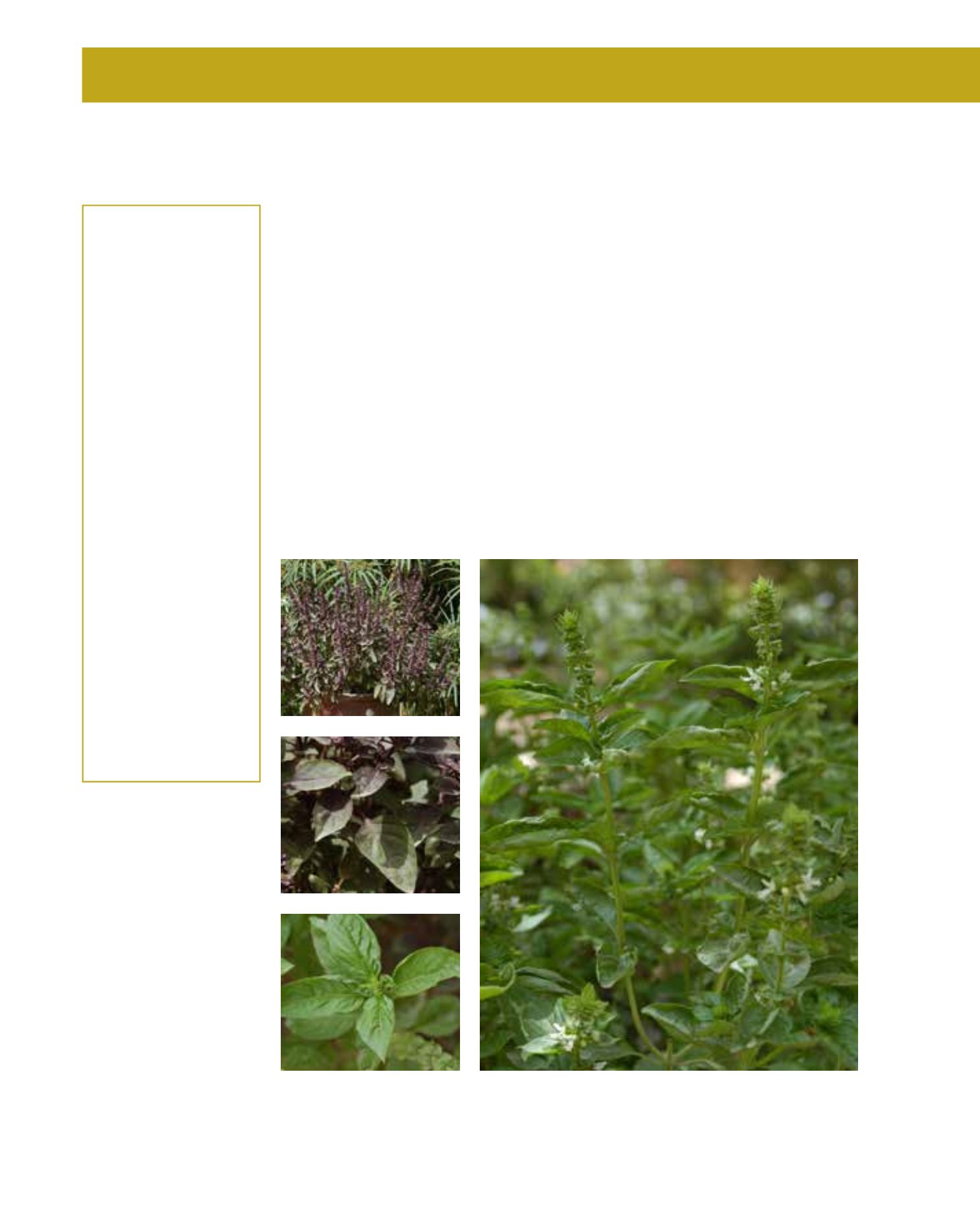

GENERAL
Origin
:
sub-Mediterranean,
Mediterranean,
sub-tropical
Humidity
:
semi-arid, semi-
humid
Propagation :
direct sowing,
sowing and
pricking out
Maintenance :
moderate
CONDITIONS
Urban climate :
resistant
Dessication :
resistant
Stagnant water :
vulnerable
Irrigation
:
medium
Salinity/ppm :
low (700 ppm)
Hardiness
:
+3°C
SHAPE
Type
:
annual, biennial,
perennial
Height
:
0.3 m-0.6 m
Spread
:
0.2 m-0.4 m
Foliage
:
deciduous
FLOWER
Colour
:
white, pastel
yellow
Size
:
0.5 cm - 0.8 cm
Period
:
June - August
Smell
:
aroma, strong,
leaf, spicy
FRUIT
Type of fruit :
nutlet
Fruit size
:
0.1 cm
Toxicity
:
edible, leaf
Ocimum basilicum is known by its common name Basil, or rayhan in Arabic. Its original dis-
tribution is from the Middle East to southeastern Europe and southwest Asia. Basil is an annual
herb that can also enjoy a longer lifespan in regions with mild winters. It grows between 30 and
60 cm high, with a spread of up to 40 cm. The round leaves are highly aromatic. Normally, the
leaves are fresh green, but there is a variety with a very attractive dark-red to purplish-red foliage
named Ocimum basilicum ‘Purpurascens’. The flower appears in summer in spikes with white
0.5–0.8 cm single flowers. The flowers of ‘Purpurascens’ are a light violet. Basil prefers a moist
soil with low salinity, but likes sunny locations with low air humidity. Basil is a very tasty herb,
but its use can also be recommended in landscape design for private parks and gardens, container
planting and public open spaces. As grouped or massed planting, groundcover, or as a hedge or
undergrowth, it will have a pleasing visual appeal. Readily growing from seed, it is often found
growing on footpaths near restaurants in many parts of Arriyadh: in Addiriyyah, it can be seen
in several places as spontaneous vegetation in the undergrowth of shrubs. This would indicate
that it could be used more often in the planting of public open spaces. Propagation is by direct
seeding, sowing, and pricking. The level of maintenance depends on the location, which means
that only low maintenance is necessary under optimal conditions. Regularly pruning promotes
a dense growth.
215
Ocimum basilicum,
Lamiaceae
Basil,
rayhan
















